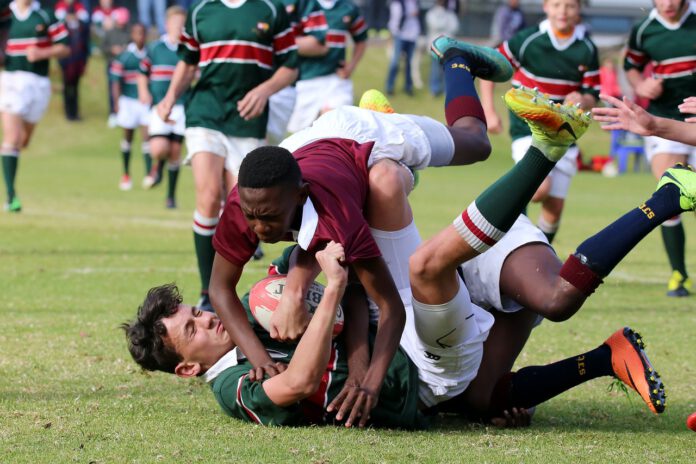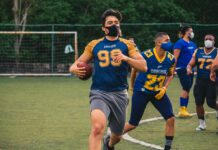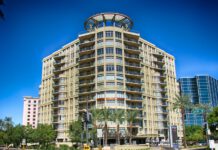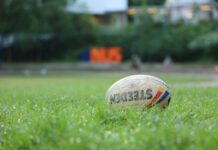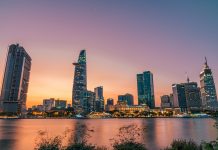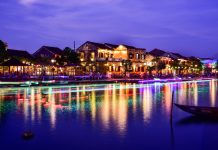As the 19th century drew to a close there was a consensus of opinion on both sides of the Irish Sea that a sporting club for Irishmen in London was badly needed. Part of the inspiration for this was the example of the exiles from the other home countries, London Scottish had been formed in 1878 and London Welsh seven years later in 1895. These clubs offered their countrymen a home away from home in London, a place to meet and relax while employment or education or other reasons took them away from their home country.
“So it was in 1898 that a group of Irishmen came together to form their own club, the London Irish Rugby Football Club”
So it was in 1898 that a group of Irishmen came together to form their own club, the London Irish Rugby Football Club. The founding fathers were an exceptional group of powerful personalities embracing politicians, lawyers and businessmen united by a sense of Irishness and passion for rugby. From the beginning London Irish was to provide a welcoming “home” and hospitable meeting place for all Irish people, regardless of creed or politics.
Fortunately for the founding fathers their inspiration off the field found equal inspiration on it through the arrival in London at the time of veterinary surgeon, Louis Magee, a leading Irish international. Magee represented Ireland 27 times between 1895 and 1904 at out-half. He was a vital recruit for London Irish and attracted others of his countrymen to the new club.
By late September 1898 London Irish was ready for action. The first game was played on 1st October against Hammersmith (alas long departed) at Herne Hill Athletic Ground in south-east London. London Irish won by eight points to three!
Louis Magee’s presence together with that of the club’s first captain R S Dyas, was to have a major impact on progress. Such was their influence that regular fixtures were soon arranged with most of London’s leading clubs of that era including Blackheath, Rosslyn Park, Saracens and Wasps.
A decade later London Irish was firmly established. Of 28 matches played in the club’s tenth anniversary season there were 15 wins and 13 defeats. 1911 saw the club’s first foray into Europe, to France for a game against Le Harve. Sadly, it would not be long before London Irish members would be crossing the Channel for altogether different reasons that were to impact on the club.
Great Wars and Their Impact
Irish rugby was to be affected badly not just by the two World Wars during the first half of the last century but also by the Easter Rising of 1916 in Ireland. Many of the club’s members were among the soldiers of the Irish Regiments that lost their lives in the 1914-18 war.
Like so many other clubs, London Irish drifted into the early 1920s. It was not until 1923 when the Irish Free State was established and peace returned that the club was able to welcome players from across the Irish Sea on a regular basis. For London Irish it was like starting all over again.
By the late 1920s the club boasted its first “home grown” Ireland international in a mighty forward, S J ‘Cags’ Cagney who won 13 caps in the green jersey between 1925 and 1929. This decade saw the inauguration of regular fixtures against great clubs such as Leicester and Cardiff. Cagney was captain of the club in the 1928/29 season when it did the double over the other two London exiles clubs for the first time.
Another link with Leicester at this time was the created by Cecil Beamish, a son of the famous Cork-based brewing family, who played for the Midlands club before transferring to London Irish in the early 1930s. Cecil’s older brother George also joined London Irish in 1930.
He was a big man not just in stature but also in personality. He was to become captain of Ireland in 1932 and was to go on to become a famous Battle of Britain pilot in the Second World War.
Few matches were played during the war between 1940 and 1945. Many London Irish players found themselves in services’ teams in far distant places. Nine of the players that played for the club in the 1938/39 season lost their lives and others never returned to England.
A Home of Its Own
London Irish’s itinerant existence impacted adversely in playing and social terms so the club’s officers decided that if their ambitions were ever to be realised the club needed a home of its own.
“The club thrived at Sunbury for almost a decade until the grounds were requisitioned by the Ministry of Agriculture shortly after the outbreak of World War II to grow food for the population of the Capital.”
After looking at various options and locations 12 acres of land were eventually purchased at Avenue Road, Sunbury on Thames in south-west London. The transaction was completed on 16th June, 1931 for the princely sum of £1, 280!
There followed a busy five months in agricultural terms! A pitch was prepared and the first game was played on 5th December against London Welsh, the result was an honourable 8-8 draw.
The club thrived at Sunbury for almost a decade until the grounds were requisitioned by the Ministry of Agriculture shortly after the outbreak of World War II to grow food for the population of the Capital.
Such was the state of the grounds after the War that the Club had no choice but to abandon Sunbury temporarily and continue to play its first team rugby at the Rectory Field in Blackheath
Lows and Highs
The immediate post war period was to prove difficult for the club as it struggled to put together a consistent first team in the 1945/46 season.
Things slowly improved as players returned, however as 1946 turned into 1947 Europe and the United Kingdom in particular suffered one of the most horrendous winters of the century. Grounds were frozen with the result that London Irish played only 20 games.
The club’s fortunes were to change dramatically in the following season as key players joined including a new captain in Des O’Brien, one of the great back row forwards of his time. He went on to manage the 1966 Lions tour to New Zealand. The first XV played thirty games losing only nine, winning 19 and drawing two to record the most successful season in the club’s history to date and a fitting way in which to celebrate its 50th anniversary. A bonus for the club was that four players – Kevin O’Flanagan, Jim Corcoran, John Daly and Des O’Brien played for Ireland in that season’s Five Nations.
It was also in this remarkable season that London Irish decided that given the undeveloped state of Sunbury, it would be in the club’s best interest to combine with Blackheath and share the facilities at the Rectory Field in south-east London.
As the 1950s dawned, the club was fielding six teams most weeks making it a thriving hub of London rugby with a growing reputation for the fun to be had off the pitch as well as the commitment and organisation on it. It was also at this time that the club began a schoolboys’ section that was to be important in the years that followed.
In 1951 London Irish became the first club in Britain to host a touring Italian team when Roma came to town and played at Blackheath. Indeed the early 1950s saw a host of great rugby teams coming to Rectory Field to play either Blackheath or London Irish. The only problem from an Exiles’ perspective was that the club was split in two with the junior teams using the steadily improving facilities at Sunbury and the senior team playing in the south-east of the capital.
By the mid-fifties the club had started to put together the nucleus of a squad that would one day provide the club with its finest season in its first hundred years. Prominent among the players was a young scrum-half called Andrew Mulligan who played his first season at Irish in 1952-53 when he was only 16! He was to go on to play for Cambridge, Ireland, the Lions and the Barbarians.


